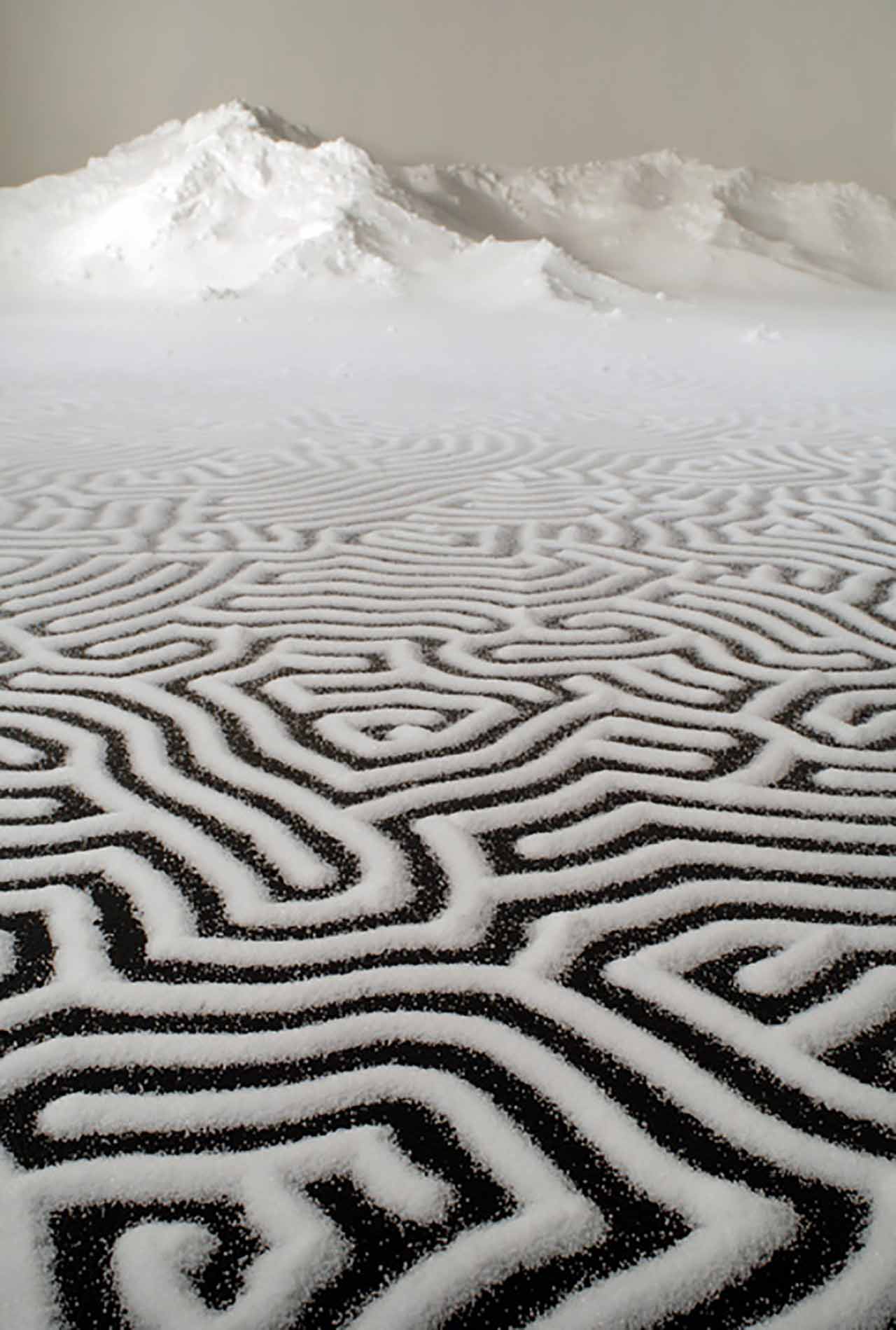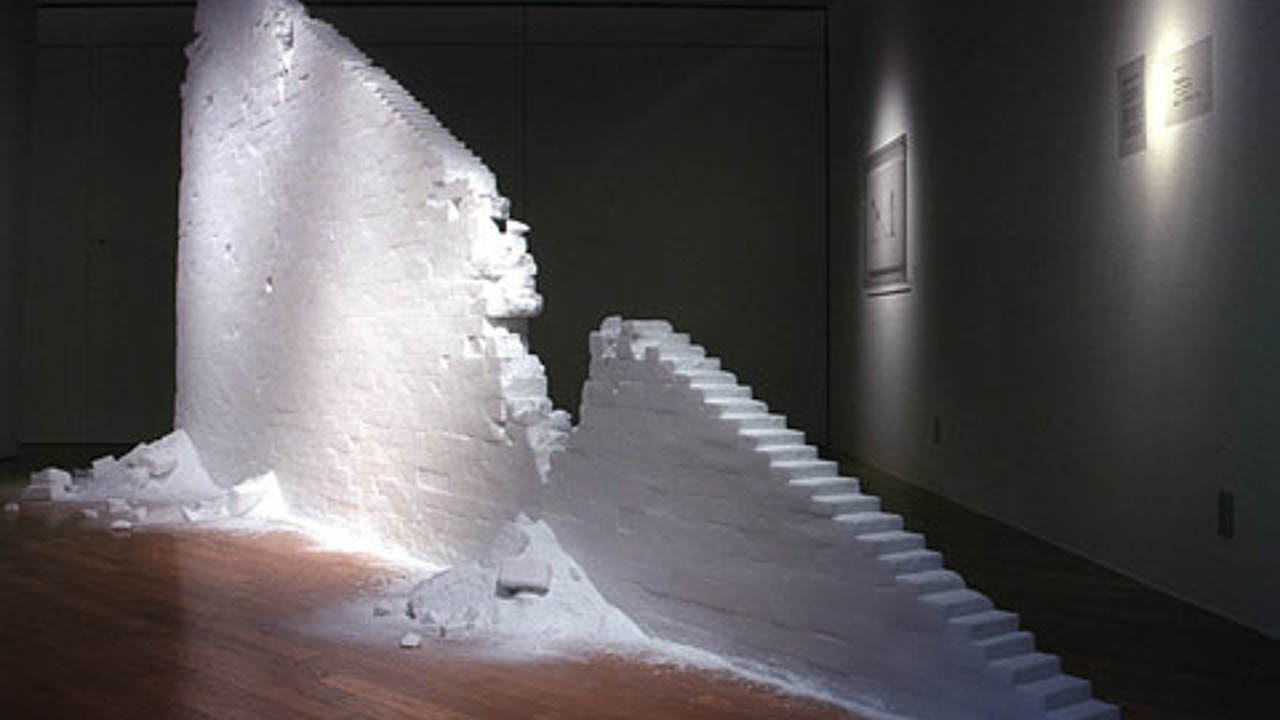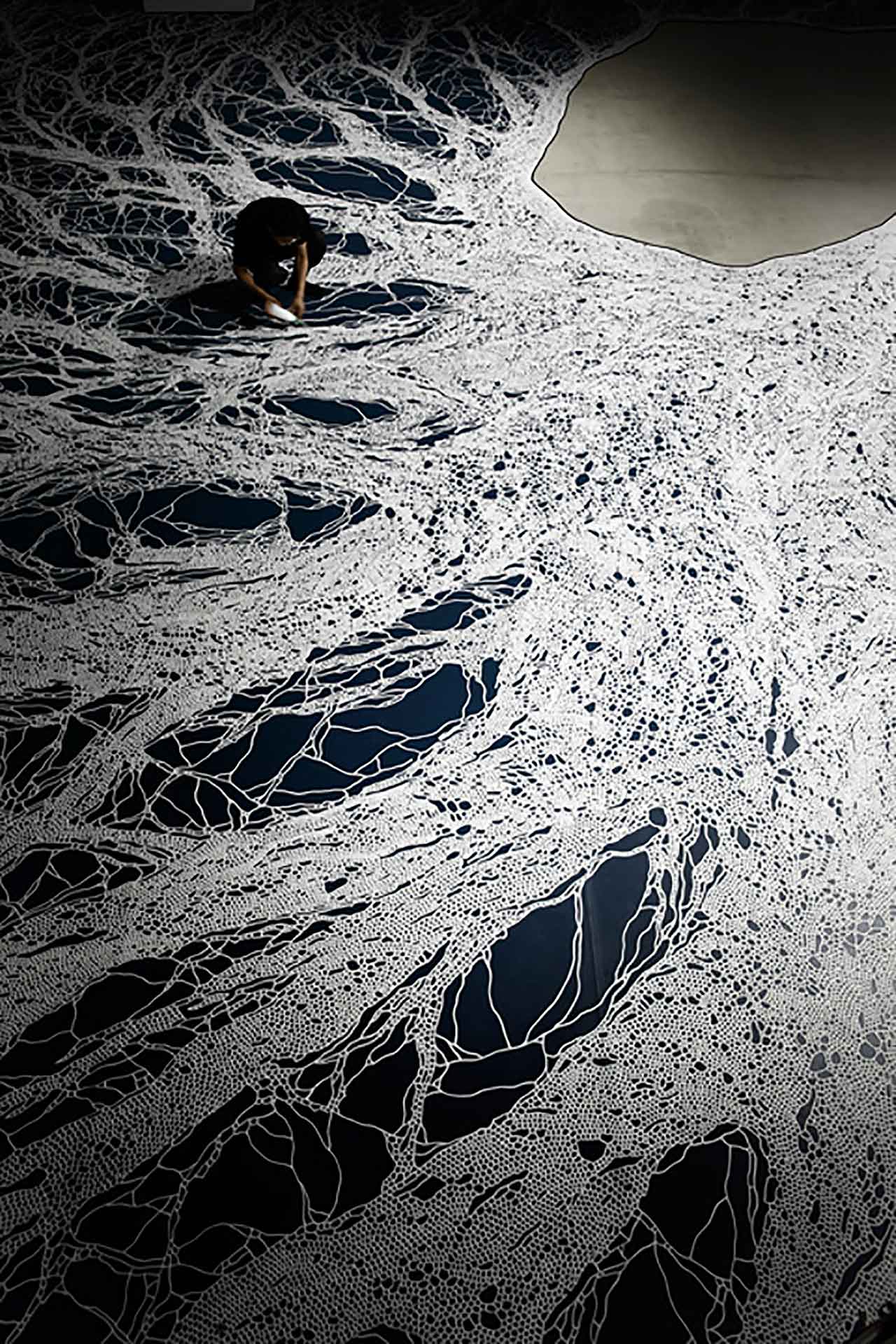This year I’ve been creating a lot of labyrinths in the studio, mainly large scale paperworks made of maps, books and labels. They take a lot of time to make, sitting on the floor of the studio, lost in pathways of my own making for hours on end. What I love about them though is that very process of getting lost, surrendering to the long-winded time-consuming nature of it and ultimately making something bigger than me, outside of my own thoughts and that surprising moment when I step back and wonder if I actually had anything to do with it at all.
So when I first found a picture of Matoi Yamammoto at work on the floor creating labyrinths from fine lines of salt, I was fascinated to find out more. Here’s a video of him drawing “Return to the Sea”, a site-specific installation in Charleston, South Carolina which took him 2 weeks to complete during his residency there:
[pl_video type=”vimeo” id=”42177795″]Despite the lengthy process of constructing his pieces, the dismantling, or destruction, of these saltworks is an equally important and rewarding process for Yamamoto. In contrast to the solitary way he works when creating the pieces – the meditative part so to speak – the tidying up part when the artwork gets taken down and the gallery is returned to its ‘neutral’ space, is a communal experience, and a joyous one. Nothing is wasted – the energy he created during the show is simply moved or transported elsewhere.
Matoi invites people to come and help with the clean up, each collecting a bag of salt from the floor and returning it to the sea in their own way. This is no mean feat, as some of his installations are made up of over 900kg (2,200lb) of salt. Scooping, cleaning and scraping is followed by releasing, letting go and, for the salt, rejoining the universe – a return to the form it may once have had before Yamamoto’s brief intervention with it.
There’s pure beauty in these cycles within cycles – the ideas of birth, life and rebirth that, as Yamamoto points out, are very much present in ideas around and uses of labyrinths in the West. For me, the visual impact of his work also reinforces patterns within patterns, macrocosm and microcosm – drawings that look simultaneously like The Milky Way and also like pictures I’ve seen of the human brain with synapses firing – the electrical impulses that enable us all to think, or move or live. Billions of connections, pathways, thoughts.
Which is not surprising, as Yamamoto explains in the film that he was actually trying to draw a brain – not necessarily from the inside out, but he is interested in his memories and honouring all those thousands of little ones that he has of his sister, who sadly died of brain cancer in 1994, rather than just a few big ones.
Yamamoto’s work is elemental – he started off with the salt earlier in his career building installations with it – walls, structures and 3-dimensional things you could walk round and through – and has honed these drawings down to (mainly) 2-dimensions, where it’s all spread out for to see. This flattening out process is something I’ve been doing with the book and atlas pieces I’ve been working on too, laying them out chapter by chapter, page by page and sentence by sentence in an attempt to make a different kind of sense of them, to explore our understanding and interpretation of them.
In Japan, salt is traditionally used ritually for helping keep memories alive – for reminders. Yamamoto’s delicate and endless variations with these millions of tiny grains of salt are for me, awe-inspiring reminders – deeply personal yet universal reminders – of our own mortality and our part in the whole.
See more of Matoi Yamamoto’s work here:
Matoi Yamamoto website




